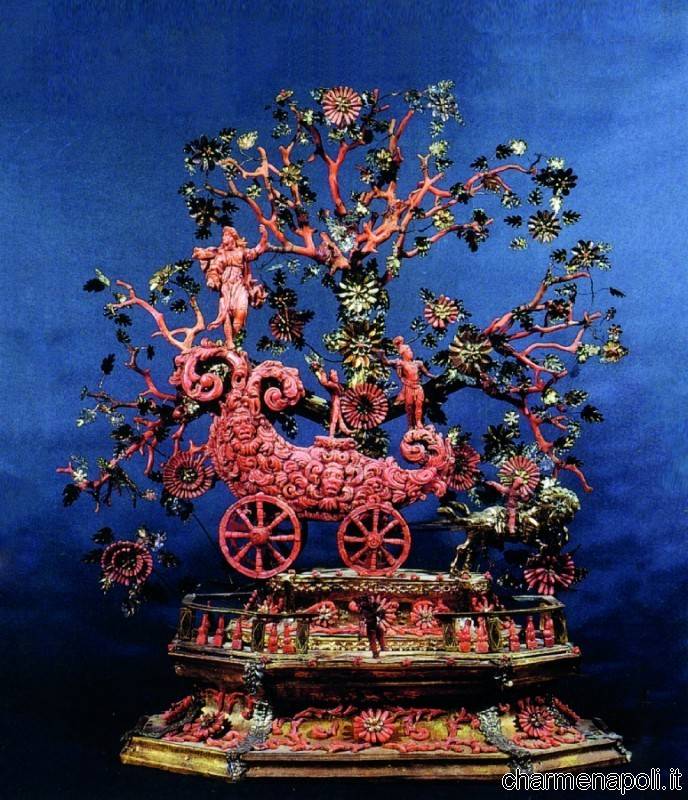They call it ‘red gold’ because it has the same opulent excellence and unique rarity as the precious yellow metal, but its colour and origin could not be more different. Coral is organic and grows, in one phase of its life cycle, on rocks at the bottom of the sea where it can be bright red, pink, white brown or, occasionally, black. The beauty of this singular material enchanted the Mediterranean’s fishermen who would sometimes find it in their nets and ascribed it with protective and revitalising powers; artisans would gaze in wonder at its intense colour and sensuous form, which has been crafted over the last 200 years into delightful works of art and exquisite jewellery. From the Greek word koraillon for ‘hard skeleton’, coral is produced by communities of polyps which slowly build up a protective calcium carbonate frame at their base. When the animal dies, its skeleton is ‘colonised’ by other polyps which carry on where their predecessor left off, eventually creating a tree-like fortress in the depths. Torre del Greco has long specialised in crafting this special material, but the town has been inextricably bound to the art of coral transformation since the times of the Normans and the Angevins almost 1000 years ago when the ‘red gold’ was discovered in the Gulf of Naples.[charme-gallery] Local fishermen began netting it and taking it to what is now Piazza del Carmine in the centre of Naples, where merchants from Provence, Marseilles, Amalfi and Pisa would ship it all over Europe after having it transformed into grains and spheres by the master craftsmen in Trapani so that it could be used in rosaries, small sculptures, crucifixes, and ornaments. In the 19th and, above all, the 20th century, coral crafting produced more elaborate creations when artisans in Torre del Greco began to put the experience acquired in centuries of trading to good use and developed the artistic transformation of coral. They let their imaginations soar to meet the naturalistic tastes of the time, creating leaves flowers, fruit and animals for use in jewellery and as ornaments. Hair grips and combs, inkpots and candelabras were created by the flair that still typifies the quality and design of coral from Torre del Greco. When Genoa and Marseilles fell into decline, Torre del Greco and Naples easily won the monopoly of coral craftsmanship and soon began to explore new forms inspired by the tree-like structure of natural coral. Success in the art depends on the artisan’s skill but the latter draws inspiration from the shape of the original coral branch, just as the great Michelangelo released a masterpiece from the block of marble in which it was imprisoned. The more slender branches are transformed into beads for necklaces, brooches and accessories, while the larger pieces are selected to become cameos and sculptures, thanks to an art that embraces the very soul of coral.

 Italiano
Italiano














